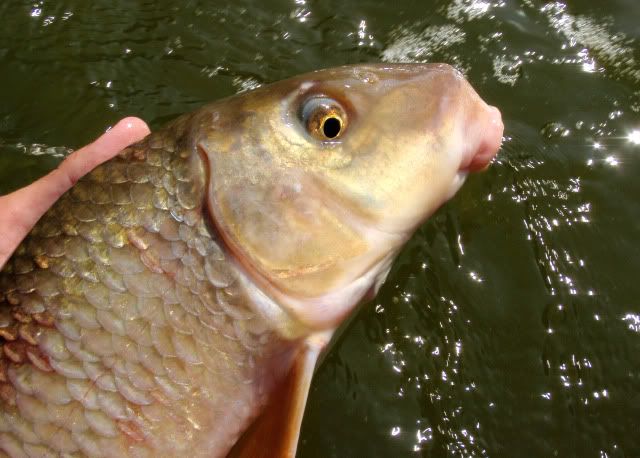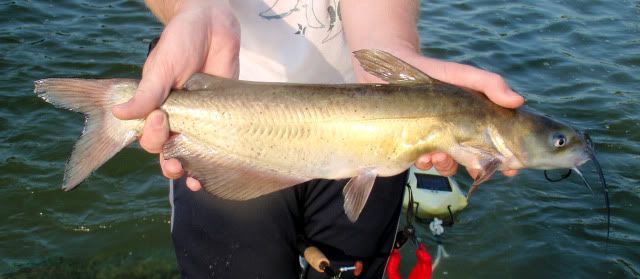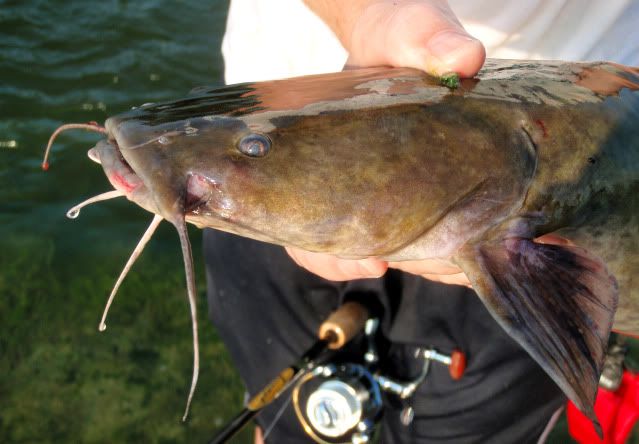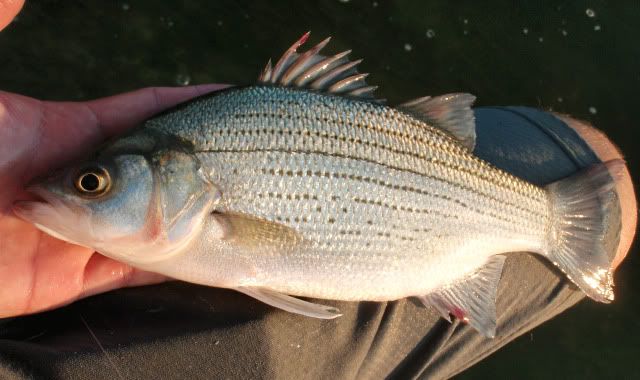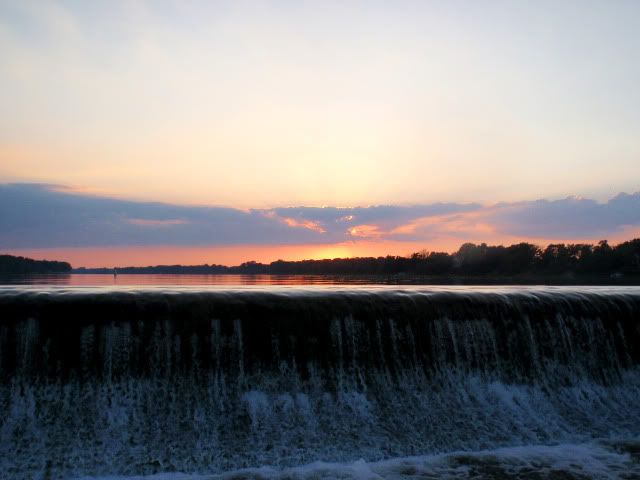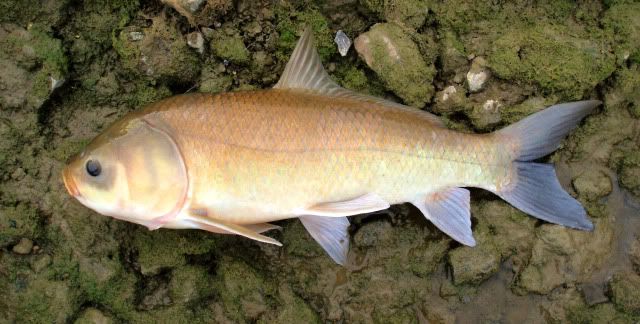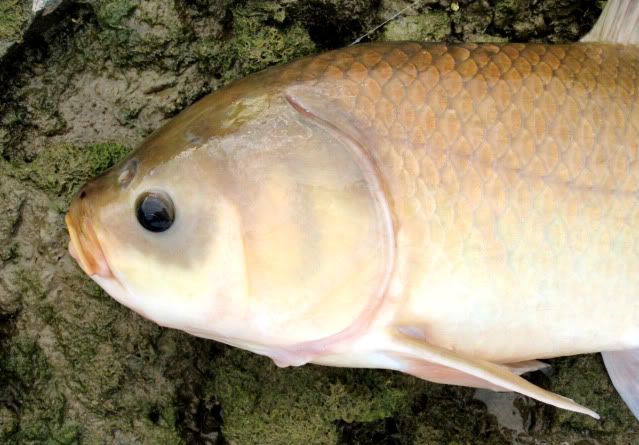I've been working on an electrofishing crew in Illinois for the last few weeks, and what's one of the first things I do when I return to Ohio from working?... I grabbed my seine and fishing pole and headed over to the furthest downstream dam on the largest tributary to the western basin of Lake Erie. For those not familiar with the Maumee River, the river is formed where the St. Joseph River and the St. Marys River meet in Fort Wayne, IN (see map below). The land use in the Maumee River watershed is almost entirely agricultural (except in Toledo, OH, where the landscape becomes urban), therefore the river runs turbid most of the year due to excess siltation from farmland runoff. The river in nutrient rich and shallow and serves as an excellent nursery for many of Lake Erie's migratory fish species.
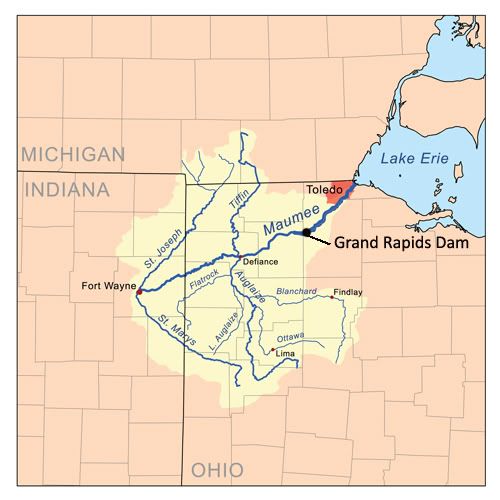
I headed to the dam in Grand Rapids, OH to do some seining, and then use some newly collected minnows as bait to tempt some of the river's larger fish species. My friend, Andrew, joined me, as he's an ichthyologist in training.
Upon arriving at the dam, we began seining some of the pools immediately downstream of the dam. The river bottom here is mostly limestone bedrock (coated in a layer of Cladophora sp.) with a few riffles consisting of limestone cobble. Silt levels are rather high throughout most of the river, but nonetheless, there was certainly no shortage of macroinvertebrates (fish food) found on the cobble in the riffles. Each rock I turned over was covered in case building caddisfly larvae, bright green caddisfly larvae, mayfly larvae, and various midge larvae. Water willow grew on top of gravel bars that have accumulated below the dam, providing backwater habitat for various fish and macroinvertebrate species as well. Here's the view of the river looking downstream from the dam;
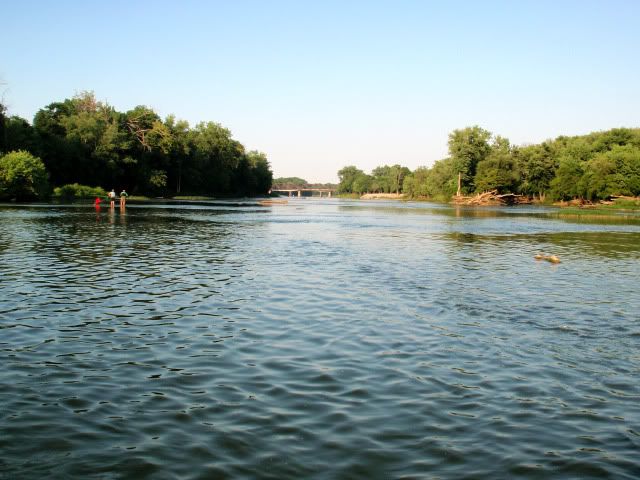
Andrew and I took our seines through the backwater areas, the riffles, and some pools that had been formed by water rushing over the dam. Here's a picture of the area we seined immediately below the dam;
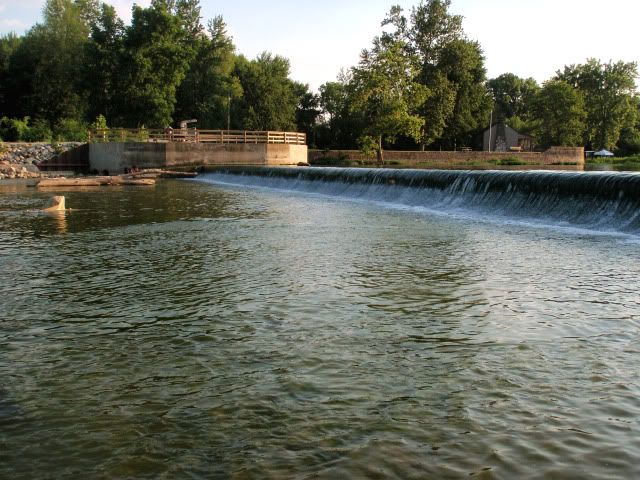
** A warning to any NANFA members planning on visiting this area: there are many deep holes and slick rocks in this area. If you're not already experienced with wading this area, please do not go without someone who knows the area. Or, if you do go, please bring a wading stick/wand. It would be pretty easy to get injured here without knowing the water. **
The pool immediately below the dam were so full of fish, lifting the seine became work. One haul of an 8' x 4' minnow seine would produce thousands of emerald shiner (Notropis atherinoides), sand shiner (Notropis stramineus), ghost shiner (Notropis buchanani), and to a lesser extent, spotfin shiner (Cyprinella spiloptera), and bluntnose minnow (Pimephales notatus). After being in awe of the incredible number of minnows found below the dam, Andrew and I worked some of the deeper parts of the pools with the seine. We were pleased to see large quantities of orangespotted sunfish (Lepomis humilis) in breeding condition;
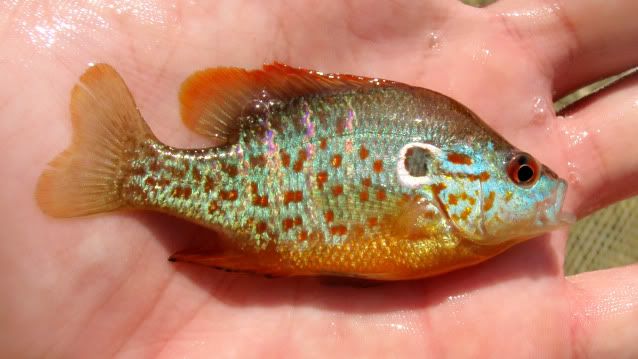
The pools were also home to young-of-year channel catfish (Ictalurus punctatus), juvenile freshwater drum (Aplodinotus grunniens), juvenile white bass (Morone chrysops), and even a few juvenile walleye (Sander vitreus) were in the pools chasing the abundant forage.
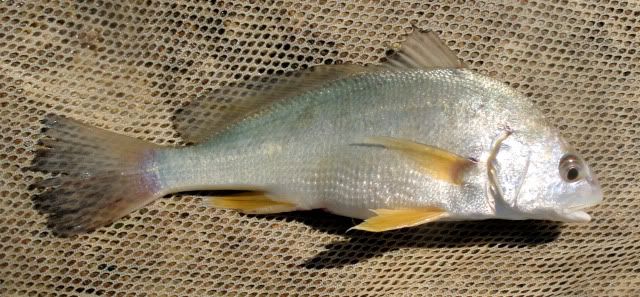
Juvenile freshwater drum
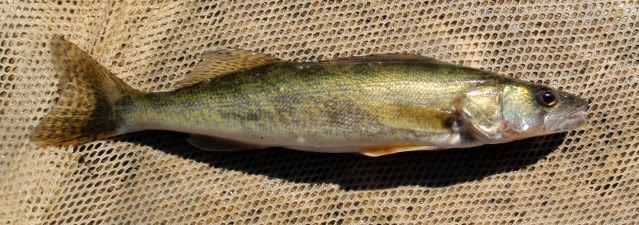
Juvenile walleye
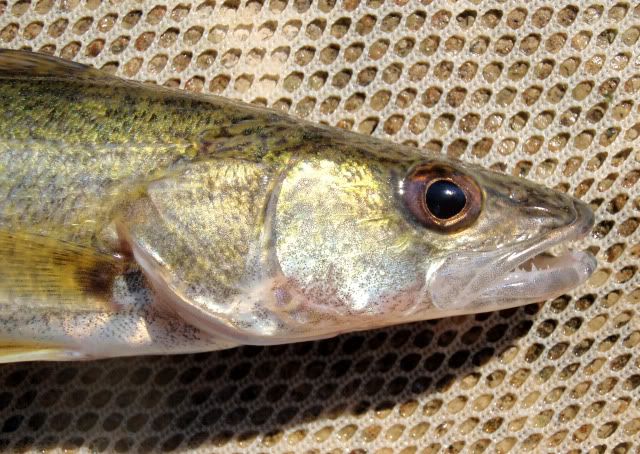
Andrew and I then headed downstream into some of the backwater areas. Among the water willow and log jams, we observed some blackstripe topminnow (Fundulus notatus) swimming lazily below the surface. There we caught bluegill (Lepomis macrochirus), northern sunfish (Lepomis peltastes), green sunfish (Lepomis cyanellus), and a few logperch (Percina caprodes);
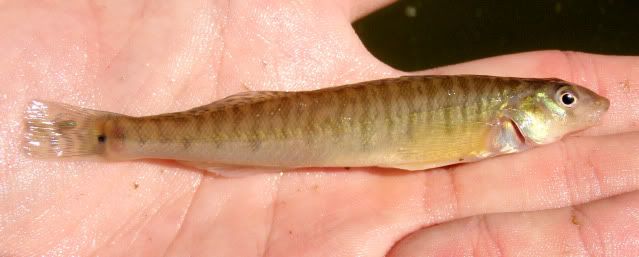
Adult logperch
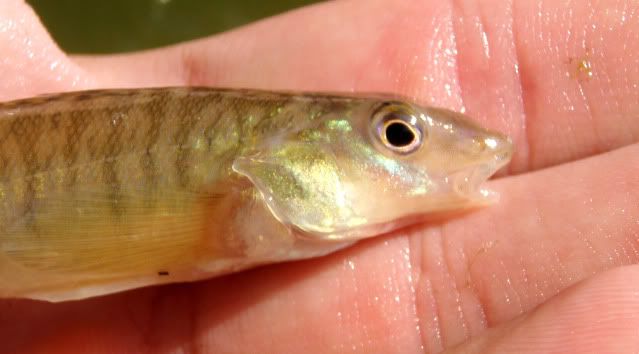
The surprise of the backwater area came in the form of a large silver redhorse (Moxostoma anisurum) that was hiding among some overhanging vegetation. The fish was in pretty bad shape. It had many lesions and was pretty emaciated;
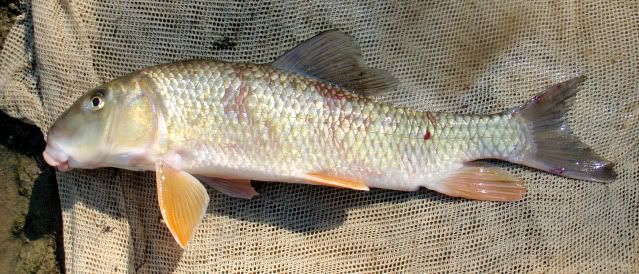
^^^ - I'm at my limit for the number of pictures I can post in one message. I'll continue with more below.


